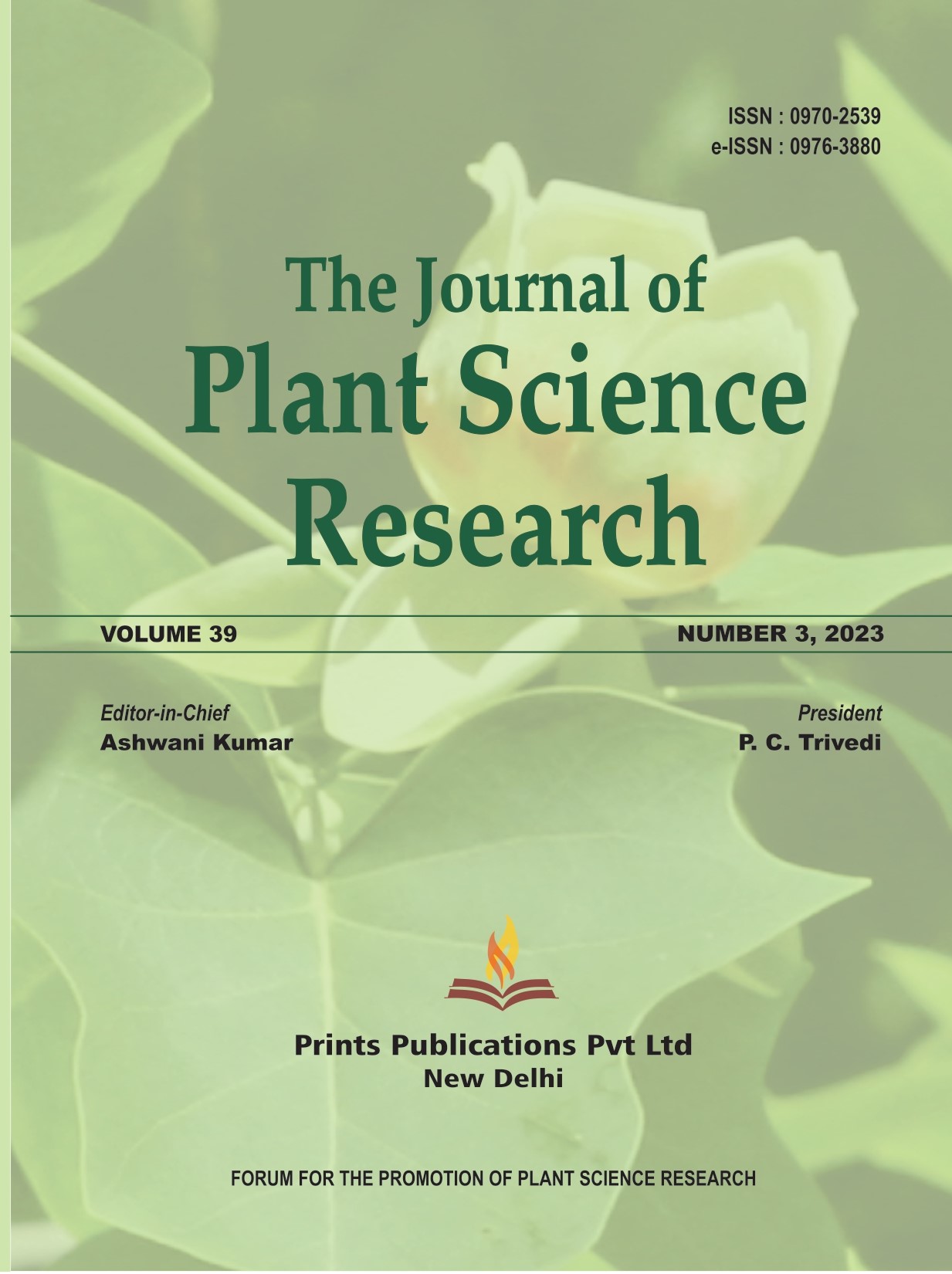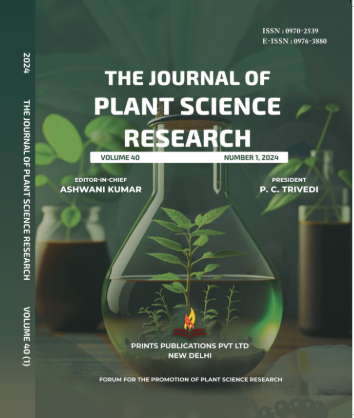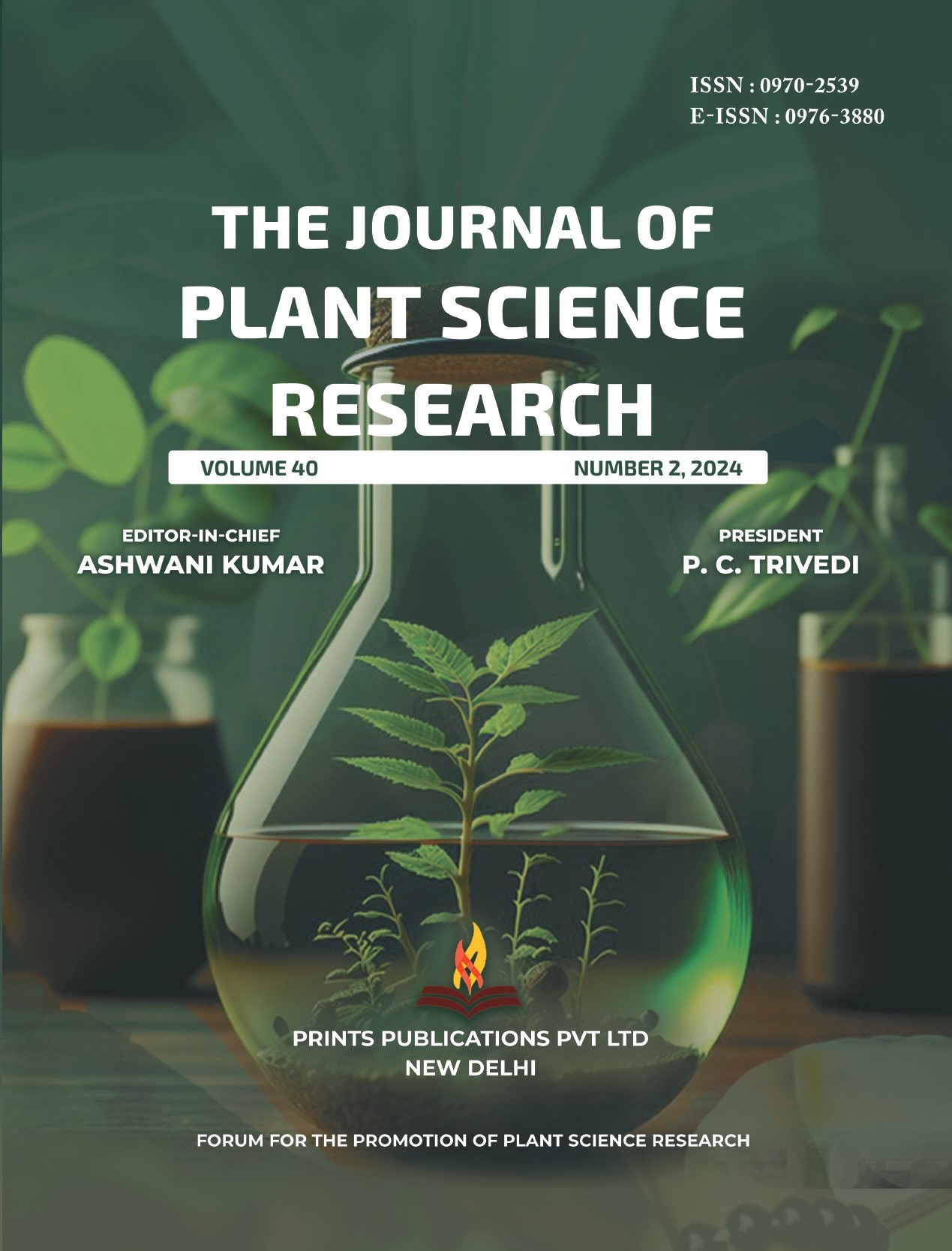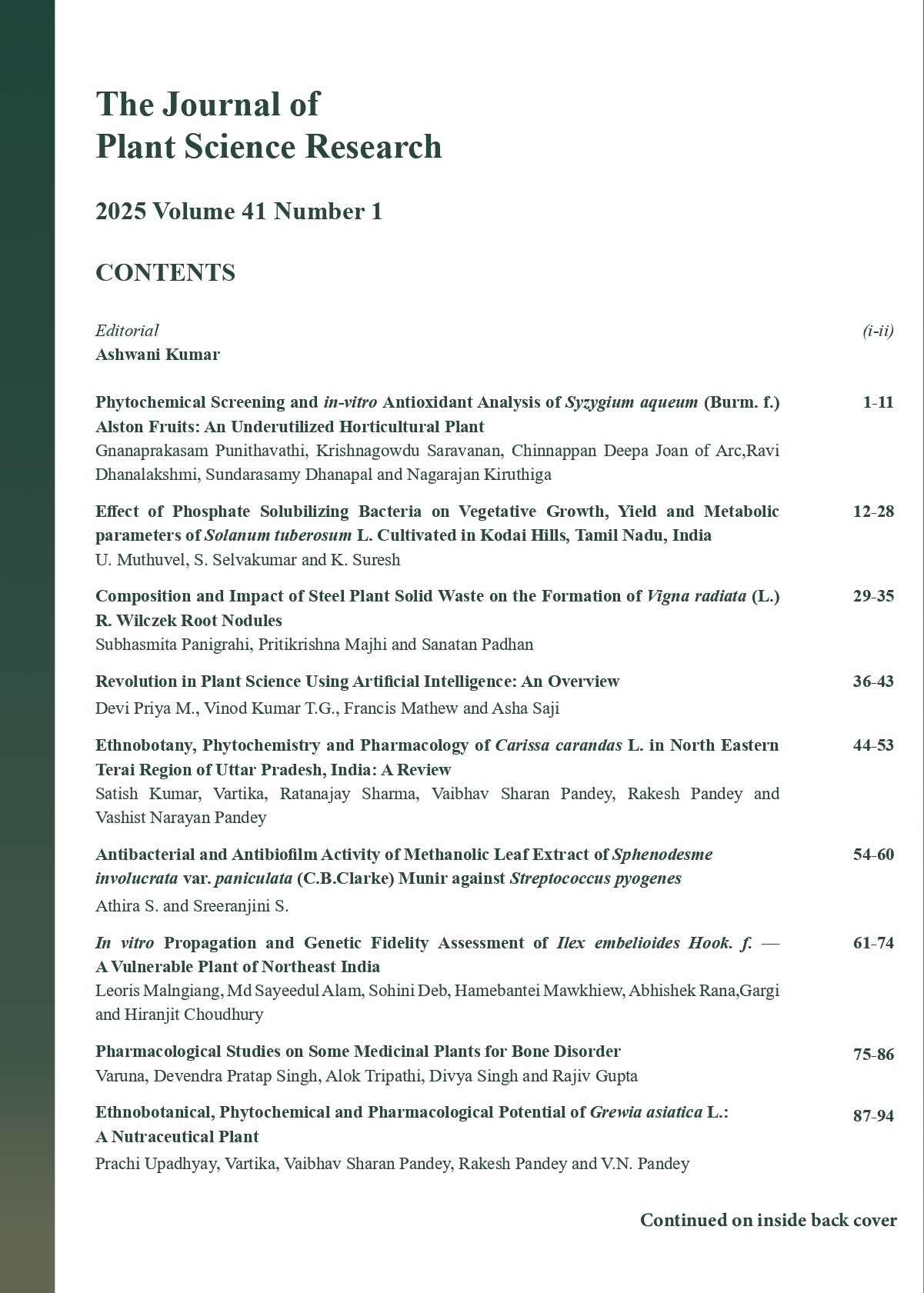The Journal of Plant Science Research - A UGC Care-Listed Journal
Published in Association with Forum For the Promotion of Plant Science Research
Current Volume: 41 (2025 )
ISSN: 0970-2539
e-ISSN: 0976-3880
Periodicity: Tri-annual
Month(s) of Publication: April, August & December
Subject: Botany
DOI: 10.32381/JPSR
Online Access is Free for Life Member
Induced Morphological Viable Mutations in Mung Bean (Vigna radiata L. Millisp.)
By : Asha Rani
Page No: 1-7
Abstract
To find the viable morphological mutations in mung bean seeds of two varieties of green gram (Vigna radiata) i.e. Narendra mung-1 (NM-1) and Pantnagar mung-2 (PTM-2) were obtained from Pantnagar seed department, Pantnagar University, Pantnagar. These mutations occur due to the toxic effects of heavy metals which were present in city waste water. This effluent was collected from the B.D.A. colony nalah situated near Gulabrai Inter college of Bareilly city. The concentrations of the heavy metals such as copper, zinc and lead were found 7.500 mg/l, 7.270 mg/l and 3.740 mg/l respectively in city waste water. Different concentrations (80%, 90% and 100%) of the effluent were prepared to treat the mung bean seeds.
In first (M1) generation the phytotoxic effects of effluent on different growth parameters were observed. The seeds of M1 plants were collected and sown on plant to row progeny basis to raise second or M2 generation. Different type of viable morphological mutations were recorded in second (M2) generation. A wide range of viable mutants on seedling length, appearance, leaf number, shape and size, maturity pattern , yield were isolated in the M2 generation. Synchronous, early maturing and high yielding mutants are agronomically desirable which may be utilized in future breeding programme. Spectrum and frequency of these viable mutants were calculated. It has been observed that frequency of viable mutation increased with increasing concentrations of heavy metals. The heavy metal treatment showed increase in induction of viable mutation frequency and it reached to 3.255 in 100% ZnSO4 in PTM-2.
Author :
Asha Rani : Ph. D, Department of Botany, Bareilly College, Bareilly, M.J.P. Rohilkhand University, Bareilly, Uttar Pradesh, India.
DOI: https://doi.org/10.32381/JPSR.2023.39.03.1






